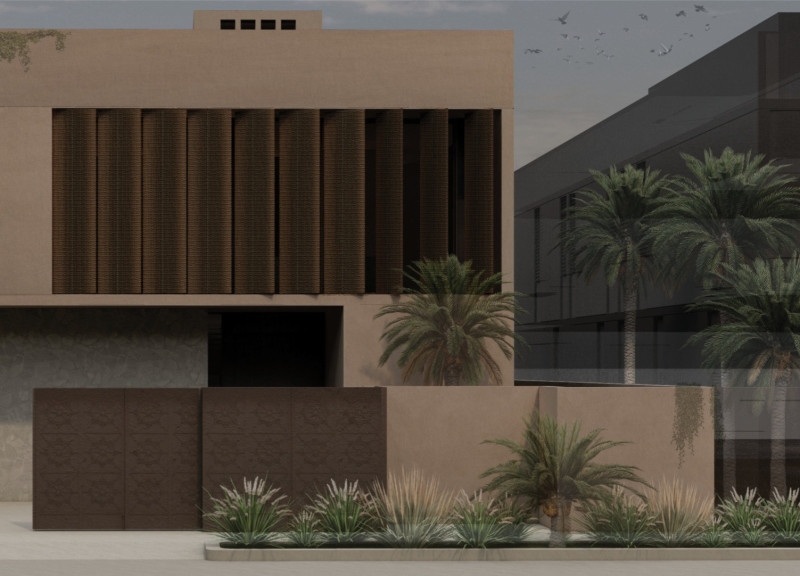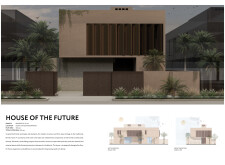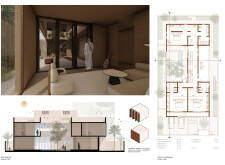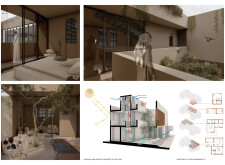5 key facts about this project
## Project Overview
Located in Ajman, United Arab Emirates, the House of the Future occupies a 450-square-meter plot with a total floor area of 400 square meters. The design draws on traditional Emirati architectural principles while incorporating modern elements to meet contemporary needs. The structure is planned with adaptability in mind, facilitating future modifications to accommodate a growing family.
## Cultural Integration and Adaptability
The design synthesizes traditional Emirati features, such as courtyards and wind towers, with modern functional requirements, effectively preserving cultural heritage while addressing the needs of present-day families. The spatial arrangement is intentionally flexible, allowing for future expansions without compromising the integrity of the overall design. Sustainable elements are prioritized throughout, including passive cooling techniques and natural landscaping that aligns with the region's climatic context.
## Materiality and Construction
Material selection is integral to achieving both aesthetic appeal and functional performance. Fired clay (adobe) is used for thermal mass, regulating indoor temperatures, while large glass windows and sliding doors maximize natural light and visual connectivity to the outdoors. Operable wood panels provide privacy and shading, complementing robust concrete structural elements that ensure durability. Additionally, decorative stone adds natural texture to the landscape, while thoughtfully chosen textiles enhance interior comfort in alignment with local design traditions.
Overall, a central courtyard serves as a focal point, promoting natural ventilation and outdoor connectivity, while the open-plan layout of living areas enriches the spatial experience. Bedrooms on the first floor are strategically placed to provide privacy yet maintain access to the central courtyard, ensuring a harmonious relationship with nature. The incorporation of passive evaporative cooling strategies and native plant landscaping further supports environmental sustainability, reflecting a commitment to responsible architectural practices.






















































